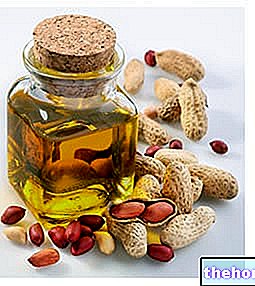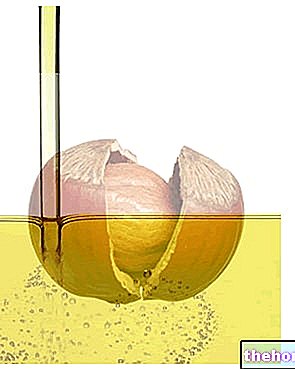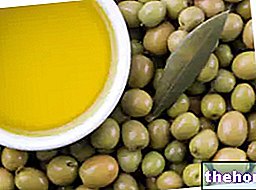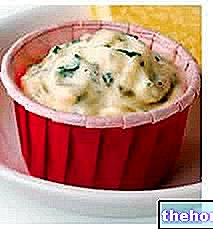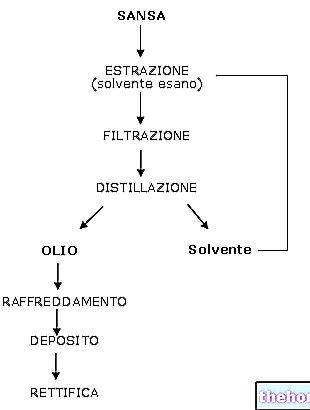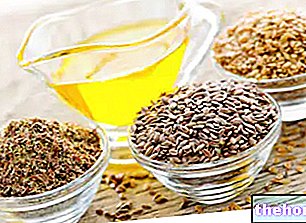«Seed oils
Grinding or refining systems consist of a series of operations necessary to make an oil edible. Seed oils in particular are often characterized by smells and colors that can be quite unpleasant.
For the single type of oil it is not certain that all the rectification systems are carried out, since these are obviously selected in relation to the defects it presents; if, for example, an oil is free of unpleasant shades, the bleaching step is skipped.

Rectification or refining is the set of treatments with which an oil that does not have the legal requirements or the appropriate organoleptic characteristics is made marketable.
Unlike olive oil, seed oils are never edible after extraction and only become edible with rectification or refining.
Soybean oil, for example, does not require discoloration, which is important for correcting the brown color of palm oil.
§ DEMUCILLAGINATION: it is used to eliminate the substances suspended in the oil, which over time can lead to the formation of precipitates (mucilage, phospholipids, resins, sugars, protein substances). In the eyes of the consumer, the basic body in an olive oil it is often considered as a synonym of authenticity, but all this does not normally apply to seed oil. The industry must therefore meet the needs and expectations of the consumer, preventing the seed oil from forming a precipitate. A demucillagination is then performed.
The precipitating substances can be water-soluble or non-polar. The water-soluble components can be removed by adding water and subsequent centrifugation, while the water-insoluble components are removed by adding phosphoric or citric acid at 60 - 80 ° C for 5 - 30 ", followed by centrifugation.
§ NEUTRALIZATION: serves to remove free fatty acids, reducing the acidity of the seed oil. This is probably the most important process of all rectification systems and is used precisely to lower acidity due to the presence of free fatty acids. Three systems are generally used: neutralization with alkali, deacidification with solvent and neutralization by distillation.
Neutralization with alkali: it is the most used system and the least drastic one; however, it cannot be used for oils with acidity higher than 10%. By adding NaOH at 60 - 80 ° C, the free fatty acids react with the soda, forming salts or soaps that dissolve in the aqueous phase. By means of phase separations and subsequent washing with water at 90 ° C these soaps are totally removed and sent to the cosmetic industry.
Deacidification with solvent: it is based on the different solubility between triglycerides and free fatty acids. The oil is treated with a mixture of solvents based on hexane and isopropanol, the triglycerides dissolve in hexane, while the free fatty acids have a greater affinity for isopropanol. Subsequently, a phase separation is carried out and then the hexane is removed from the oil by distillation.
Neutralization by distillation: hot distillation process under high vacuum. It is used for oils that also need deodorization. It is a little used method, because it has the disadvantage of being particularly expensive, especially when an oil does not need to be deodorized.
§ BLEACHING: serves to remove pigments, oxidation products, traces of soap and sulfur compounds. It can be carried out with chemical methods, using oxidizing agents (KMnO4, K2Cr2O7, ozonated air, UV rays) or with physical methods (bentonite, bleaching earths, activated carbon).
§ DEODORATION: removal of volatile substances that give unpleasant odors (free fatty acids, intermediates of fat oxidation, unsaturated hydrocarbons, proteins), by means of steam distillation under high vacuum at high temperature (200 ° C). along with neutralization.
§ DEMARGARINATION or WINTERIZATION: it serves to remove triglycerides with a high melting point which, when exposed to low temperatures, condense and precipitate. The oil is slowly cooled down to the "demargarination limit" temperature, maintained in these conditions for about 12 - 24 h and subsequently filtered. This allows the product to remain stable even if subjected to high temperature changes.
This solid material, given by the high-melting triglycerides that are collected, is then mixed with the other ingredients for the preparation of margarines.
MAIN SEED OILS
The composition of a seed oil varies according to numerous factors. In addition to the botanical species considered, the differences depend on the variety, the type of cultivation and the seasonal climatic trend.The composition of fatty acids can therefore undergo slight variations as a result of these factors. Furthermore, the accidental profile can be modified by means of small genetic modifications; however we cannot modify the sterol fraction, which therefore remains the main recognition index of an oil.
PEANUT OIL (Arachis hypogea)
Contains oleic (35-72%) and linoleic (13-45%) acids; characteristics are the presence of arachic acid (1 - 2.5%) and lignoceric acid (1 - 2.5%), practically absent in other oils. Oleic acid and b-sitosterol are present in quantities similar to those of oil d "olive.
Peanut oil is very similar to olive oil from the point of view of its fatty acid composition and is therefore the most used to make cuts; what changes, and which allows the fraud to be recognized, is always the phytosterol fraction.
SUNFLOWER OIL (Helianthus annuus, fam. Composite)
It is characterized by high percentages of unsaturated fatty acids and modest saturated contents: oleic (14 - 65%), linoleic (20 - 75%), palmitic (3 - 10%) and stearic (2 - 6%). the sterol fraction is characterized by the presence of D7-stigmasterol (15%), typical of sunflower oil, as well as b-sitosterol and campesterol.
The panel that remains from the extraction has a protein content of 38-40% and therefore represents a valid protein supplement for cattle and sheep.
CORN OIL (Zea mais, fam. Graminaceae)
The germ is removed from the seed through a degermination process, then subjected to extraction. The oil is mainly composed of linoleic acid (34 - 62%), oleic (19 - 50%) and palmitic (8 - 19%). Among the sterols sitosterol (66%) campesterol (23%) stigmasterol (6%) abound ) and D5-avenasterol.
It contains about 0.1% of tocopherols, a significant quantity but which significantly decreases following the rectification treatments.
Other Foods - Oils and Fats Peanut Butter Cocoa Butter Butter Greaves Wheat Germ Animal Fats Margarine Vegetable Cream Tropical Oils and Fats Frying Oils Vegetable Oils Peanut Oil Borage Oil Rapeseed Oil Krill Oil Poppy Seed Oil Seed Oil Pumpkin Avocado oil Hemp oil Safflower oil Coconut oil Cod liver oil Wheat germ oil Linseed oil Macadamia oil Corn oil Almond oil Hazelnut oil Walnut oil Olive oil Palm oil fish Rapeseed oil Rice oil Pomace oil Seed oil Soybean oil Grapeseed oil Extra virgin olive oil Sesame seeds and sesame oil Lard OTHER ARTICLES OILS AND FATS Categories Food Alcoholics Meat Cereals and derivatives Sweeteners Sweets Offal Fruit Dried fruit Milk and Derivatives Legumes Oils and Fats Fish and fishery products Salami Spices Vegetables Health recipes Appetizers Bread, Pizza and Brioche First courses Seconds pi acts Vegetables and Salads Sweets and Desserts Ice creams and sorbets Syrups, liqueurs and grappa Basic Preparations ---- In the Kitchen with leftovers Carnival recipes Christmas recipes Light diet recipes for Celiacs Recipes for Diabetics Recipes for Holidays Recipes for Valentine's Day Recipes for Vegetarians Protein Recipes Regional Recipes Vegan Recipes

